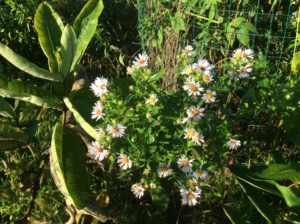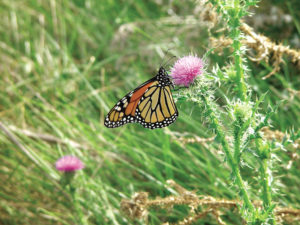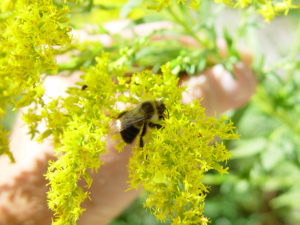
Surrounding my mowed lawn is a wild, mostly uncultivated space that currently has goldenrod blooming with tall asters starting to blossom. Every day when I pass these flowers, I see bumblebees, butterflies and other insects collecting the nectar to eat or store for the winter. Last year, when a section of soil was disturbed during construction of a building, I decided to seed the area with native wildflowers rather than grass. (I am not a fan of mowing the lawn.) Watching the series of flowers bloom over the late spring to autumn has been beautiful, colorful and full of tiny moments of joy. Not only do I see insects enjoying the flowering plants, but birds will land on the taller greenery, sometimes just resting, sometimes collecting seeds. I am not sure who has been startled more often, me or the birds when I walk by, flushing a bird from the thicket of tall plants.

Where some people might see wild, unruly areas, I see Monarch butterflies on their daily flight, fluttering above me and the “weeds”. I have even been lucky enough to find Monarch caterpillars munching on milkweed, a common plant in my wild space. Despite my efforts, I have a lot of tall ragweed appearing in my yard, but have discovered that birds love the seeds, including my chickens, and squirrels will remove and eat the leaves. In addition, I see fireflies in early June through late August, many I find hanging out on the shady greenery during the day before their light display at night. Continue reading “In Defense of Wild Spaces in the Yard”

